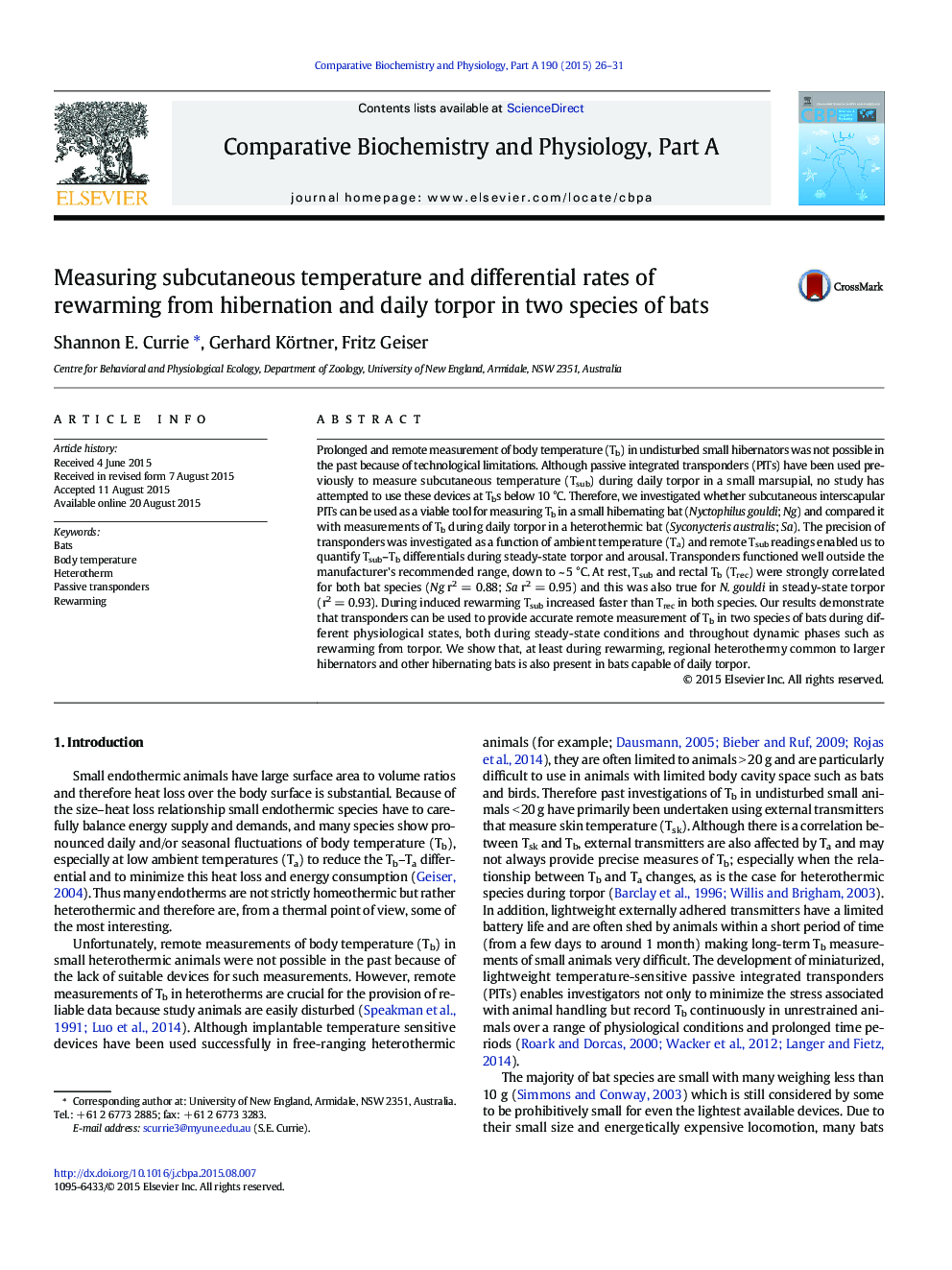| Article ID | Journal | Published Year | Pages | File Type |
|---|---|---|---|---|
| 1971887 | Comparative Biochemistry and Physiology Part A: Molecular & Integrative Physiology | 2015 | 6 Pages |
Prolonged and remote measurement of body temperature (Tb) in undisturbed small hibernators was not possible in the past because of technological limitations. Although passive integrated transponders (PITs) have been used previously to measure subcutaneous temperature (Tsub) during daily torpor in a small marsupial, no study has attempted to use these devices at Tbs below 10 °C. Therefore, we investigated whether subcutaneous interscapular PITs can be used as a viable tool for measuring Tb in a small hibernating bat (Nyctophilus gouldi; Ng) and compared it with measurements of Tb during daily torpor in a heterothermic bat (Syconycteris australis; Sa). The precision of transponders was investigated as a function of ambient temperature (Ta) and remote Tsub readings enabled us to quantify Tsub–Tb differentials during steady-state torpor and arousal. Transponders functioned well outside the manufacturer's recommended range, down to ~ 5 °C. At rest, Tsub and rectal Tb (Trec) were strongly correlated for both bat species (Ng r2 = 0.88; Sa r2 = 0.95) and this was also true for N. gouldi in steady-state torpor (r2 = 0.93). During induced rewarming Tsub increased faster than Trec in both species. Our results demonstrate that transponders can be used to provide accurate remote measurement of Tb in two species of bats during different physiological states, both during steady-state conditions and throughout dynamic phases such as rewarming from torpor. We show that, at least during rewarming, regional heterothermy common to larger hibernators and other hibernating bats is also present in bats capable of daily torpor.
